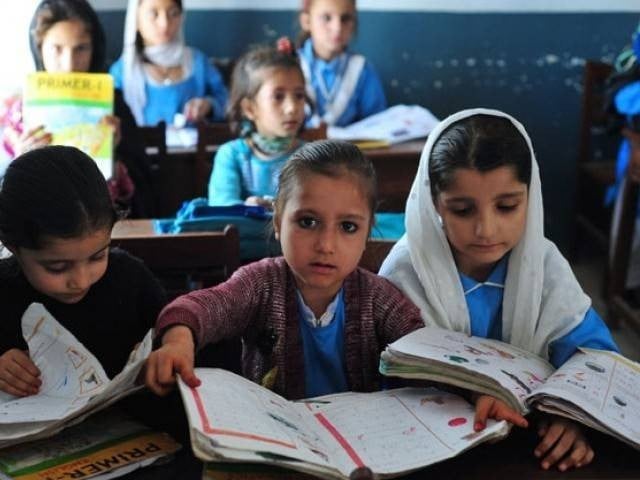
ISLAMABAD: Even as the government enhanced the education budget and is seen to be making concerted efforts to boost school enrollment in the country, the proportion of out-of-school children is still the same when compared to 2015.
This was stated in Annual Status of Education Report (ASER) 2016 national survey report launched on Wednesday.
The seventh version of the citizen-led household-based survey, managed by the Idara-e-Taleem-o-Aagahi (ITA) in partnership with a number of key civil society and semi-autonomous bodies including the National Commission for Human Development (NCHD) and others, found that 19% of children between the ages of 6-16 are still out-of-school. The remaining 81% which are attending school are not learning much either.
The ASER rural survey assessed 216,365 children between the ages of 5-16 years cohort in language (Urdu, Sindhi, Pashto, English), and Arithmetic competencies.
The report noted that almost all parts of Pakistan including Azad Jammu and Kashmir, Punjab, Sindh, Gilgit-Baltistan and the Federally Administered Tribal Areas (FATA) recorded some increase in enrollment figures from 1.4% to 4.5%.
However, at the same time, there was a considerable shift from public to private schools in most parts of the country.
The ASER 2016 rural results showed that 26% of children between the ages 6-16 years of age go to non-state schools. This was up from 24% last year.
Only the Punjab and the Islamabad Capital Territory registered a positive shift in enrollment in public schools.
Early Childhood Education (ECE) in rural parts of Pakistan has been on a declining trend, falling from 39% in 2014 to 36% in 2016.
Overall, government schools have witnessed a fall of 7.5% (63% overall) in enrollment for ECE, while the private sector continues to hold a 37% slice of total enrollment.
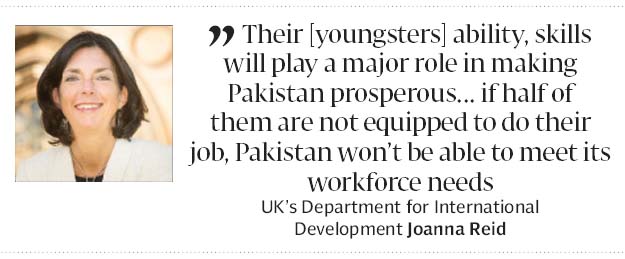
“There are 61 million young people in Pakistan aged 10 to 24 years as per the estimates of Population Council. Their ability and skills will play a major role in making Pakistan prosperous and a successful player in global economy,” said head of the UK’s Department for International Development (DFID) Joanna Reid at the launch of the report.
“If half of them [youngsters] are not equipped to do their job, Pakistan will not be able to meet the workforce needs of its economy.”
Dipping competencies
The report further notes that student competencies, especially in learning English, Arithmetic, and other languages have dipped.
As many as 48% of children from class V cannot read a class-II-level-story written in Urdu, Sindhi or Pashto.
In English, only 46% Class V students surveyed could read sentences, which should ideally be read by students of the second grade. Arithmetic learning levels too showed a decline with only 48% of class V children able to complete a two-digit division, something which is expected in the second grade.
The report revealed that only AJK showed substantial improvement in English and Arithmetic with 17% and 29% respective increase from 2015 results.
Punjab registered a solitary increase in Arithmetic learnings over scores from 2015. The survey further showed that children enrolled in private schools continued to perform better as compared to those studying in government-run schools. As many as 66% of children enrolled in Class-V in private schools were able to read a story written in Urdu, Sindhi or Pashto.
The difference in learning levels for English was starker with 65% of grade V students able to read a class-II-level sentence.
For arithmetic, 64% of children enrolled in class V could complete a two-digit division. While the gap was narrower in some provinces, the gap was a consistent feature.
Boys outperform girls
Despite the secondary and higher secondary school results showing a dominance of girls, the survey found that boys continue to outperform girls in literacy and arithmetic skills.
As many as 43% of boys could make sentences in Urdu, Sindhi and Pashto, as compared to 36% of girls. In arithmetic, 44% of boys in class V could complete a class-II-level subtraction as compared to only 36% of girls in the same grade.
Girls enrollment up
Overall, girls’ enrolment in rural areas has seen an increase from 35% in 2014 to 38% in 2016 in government schools. Correspondingly, in the private sector, this figure has risen from 37% to 40%.
Teacher attendance
Apart from students, the ASER report also surveyed teachers and found that more teachers attend private schools than public schools at 92% and 87% respectively.
Moreover, school teachers in the private sector were reported to be better qualified with 38% of teachers graduates when compared to 33% in the government sector.
However, more teachers had a post-graduate degree than those in private sector.
Published in The Express Tribune, August 3rd, 2017.

















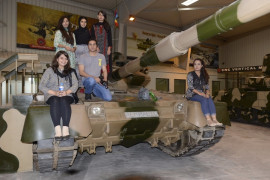
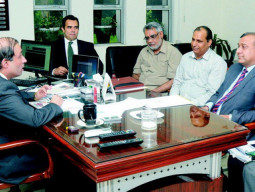
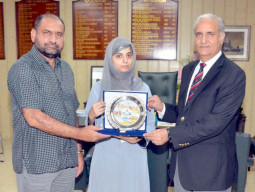


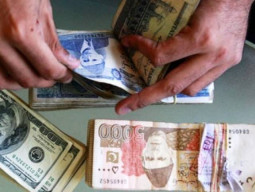
























COMMENTS
Comments are moderated and generally will be posted if they are on-topic and not abusive.
For more information, please see our Comments FAQ